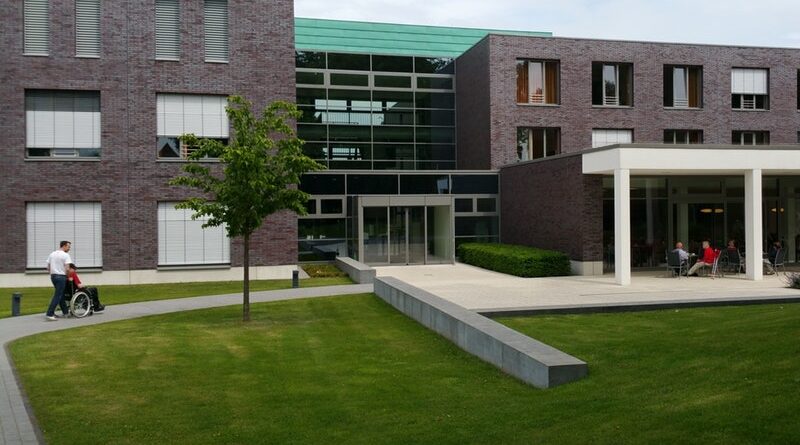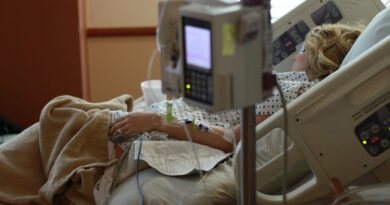Physical Outpatient Strategic Plan
Strategic management plays an important part in any business. It forms the cornerstone upon which a business is established. It is from this dimension that all the other aspects like customer response and competing factors are accounted for to ensure the firm realizes its objective. An outpatient physical therapy is a medical sub-speciality that carries out a number of rehabilitations that could have caused by trauma, injuries that are repetitive in nature, orthopaedics, chronically ill conditions, or those originating from congenital malfunctioning as well as neurologic disorders without having the need of hospitalizing the patient (Dreeben 2011). These conditions have a common effect in the sense that they limit the ability of the patient to freely move; under the above mentioned conditions several conditions can be treated.
For such facilities to effectively carry out their mandate and achieve its goal it must have developed viable strategic plan that sees its day-to-day management, the plan must include its goals, mission statement, vision and objective. All these must take in mind the welfare of the patient as well as their personnel helping the patient (Patricia & Beverly 2009).
Vision of the Facility
The core purpose of the centre is to provide rehabilitation services to patients of all gender and ages. These patients are not only taken care of at the centres but are also overseen by our specialities who make a point of following up with patients until they recover their normal statue. To ensure patients benefit fully from the facility our specialists helps patients to develop regimes that not only suit their requirements but also makes them receive treatment at a more convenient way (Michael & Catherine 2010). To achieve these mandate the centre has laid down systems that ensures smooth operation of its core purpose, these systems are well established in the customer service upon which it bestows in the human resource management that handles the inquiries, state of art facilities at the centre, regular workshops meant to better the relationships of patients and specialists. In marketing the strategic management enables the medical centre identify key areas of importance in satisfying their patients’ needs (Kissic 1994). In this respect knowing the competitors approach in the same line of service will ensure the facility embarks on a unique method of response to maintain viability and command in their areas of specialization. Strategic financial management will ensure the firm adopt tangible methods that would ensure it acquire, manage, allocate and finance resources for the business makes important strides (Nosse et al., 2004).
Mission of the centre
The centre is established for all the cases of physical therapy ranging from orthopaedic conditions like osteoporosis, arthritis, trauma and fractures, neck, shoulder and back injuries. Neurological conditions that are taken care of include muscular dystrophy, multiple sclerosis, injury of the spinal cord, trauma associated with brain injury amongst many others (Kissic 1994). Our centre has a broad scope of occupational therapy services, which includes therapeutic modality, adaptive facilities, and cognitive rehabilitation. We also help with splinting and rehabilitation of upper extremities. We believe patients are our assets and with this in mind we strive to stand out in our services by ensuring every patient irrespective of age, colour, and status quo is accorded specialist treatment that equals none of our competitors. To ensure this is attained we have in place well trained specialists across major areas of concerned, these are licensed trained professionals with many years of experience in hand therapy, lymphedema therapy, skilled driver rehab specialist, and trained clinical professionals (Monie & Phillips 2006). This pool of professionals not only attends to our clients but also ensure their health status improves, besides, they help develop a treatment regime for the patients to enable them continue with their rehabilitation process (Dreeben 2011).
To help maintain track the facility should have a way of ensuring their patients get back to them with their view of how the services are. This would ensure the firm adopts to their patients demands and stand out from the others in the similar business. One factor that sets us apart from others is our ability to help design a regime that suits the patient’s day-to-day chores for those in employment and children in schools (Nosse et al 2004). Apart from tailoring our services to the needs of our clients, the centre has also developed a group counselling and a twelve program family therapy, this one of its kind in the region.
Goals
For the facility to forge ahead and never look back, it must put down mechanisms that defines it areas of specialization and clearly outline how they aspire to achieve this aspect. By defining their core purpose and mission statement in line with services of provisions their goals are presented. This enables the centre to attain its core business ideology. This must also take note of the possible risks that both the patient and the trained personnel are likely to encounter and how this can be best resolved. For instance during physical rehabilitation the patient may develop some complications and injuries that are not originally associated with the problem presented, in this case the facility must have a policy that takes care of their clients in form of insurance cover. This will ensure the facility stands out amongst many other offering the same types of services. Profit consideration should not elevate service costs beyond the pockets of the patients, but must take into account factors like accessibility and proximity to the service facility (Monie & Phillips 2006). Where this is not affected well for patients to use their own means of transport the facility must provide an additional means.
Objectives
This forms the entire framework for the outpatient facility. First, by identifying the key objectives that forms the fundamental approach it has to attain in all its facets of chore, the centre will not only see it realizing its dream but also meet the desires and demands of the patients while providing the best return to their specialists (Michael & Catherine 2010). It is therefore, paramount that the objectives must make the environment ample for these people. For the patients, their special needs forms the priority, in this scenario the key objectives would involve service, consultation, follow ups and design of rehabilitation regimes that they would adhere to and suit their daily activities in different place of work or home setting (Patricia & Beverly 2009). Designing objectives that seeks to make the facility a profitable one must attract renowned specialists who would be able to provide care to a wide range of patients with special needs; these professionals must be registered and licensed with their professional bodies to authenticate their service provisions (Michael & Catherine 2010).
Other important aspects that would also need consideration when laying this down is the part played by other non professionals within the centre. Their contribution at times can portray the image of the centre in a positive or negative manner, and thus they also need training in line with the kind of patients they are likely to meet and interact with and that is why a well established human resource department is paramount in this case to portray a positive and well organized facility (Michael & Catherine 2010).
References
Dreeben O. I. (2011). Introduction to physical therapy for physical therapist assistants. Jones & Bartlett Learning LLC. Ontario-Canada.
Kissick, WL, (1994). Medicine Dilemmas ; New Haven.
Michael, P & Catherine G. (2010). Management in Physical Therapy Practices. Elsevier. UK.
Monie P.M & Phillips P (2006). Physical Therapy the Truth: For Students, Clinicians, and Healthcare. Monie Philips. Indiana.
Nosse, LJ,Friberg DG, Kovacek PR (2004). Managerial and supervisory principles for physical therapists. Lippincott Williams & Wilkins
Patricia A.F, & Beverly, A. (2009). Introduction to Careers in Health, Physical Education, and Sport. Wadsworth, Cengage Learning; Belmont USA




